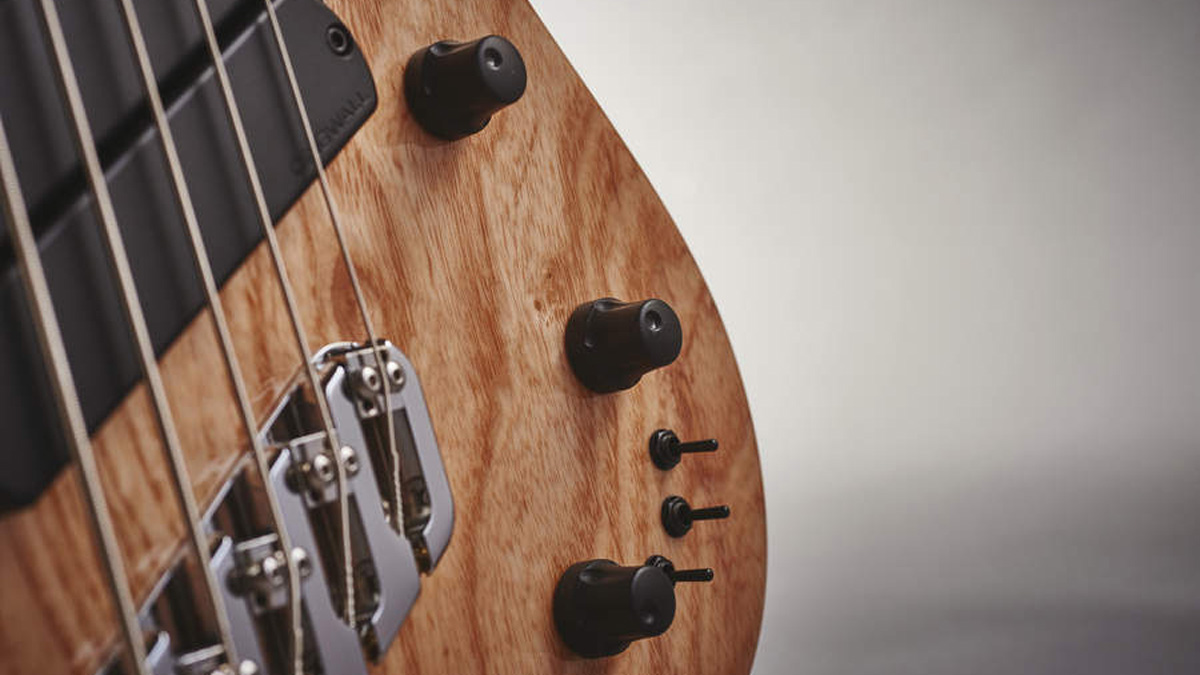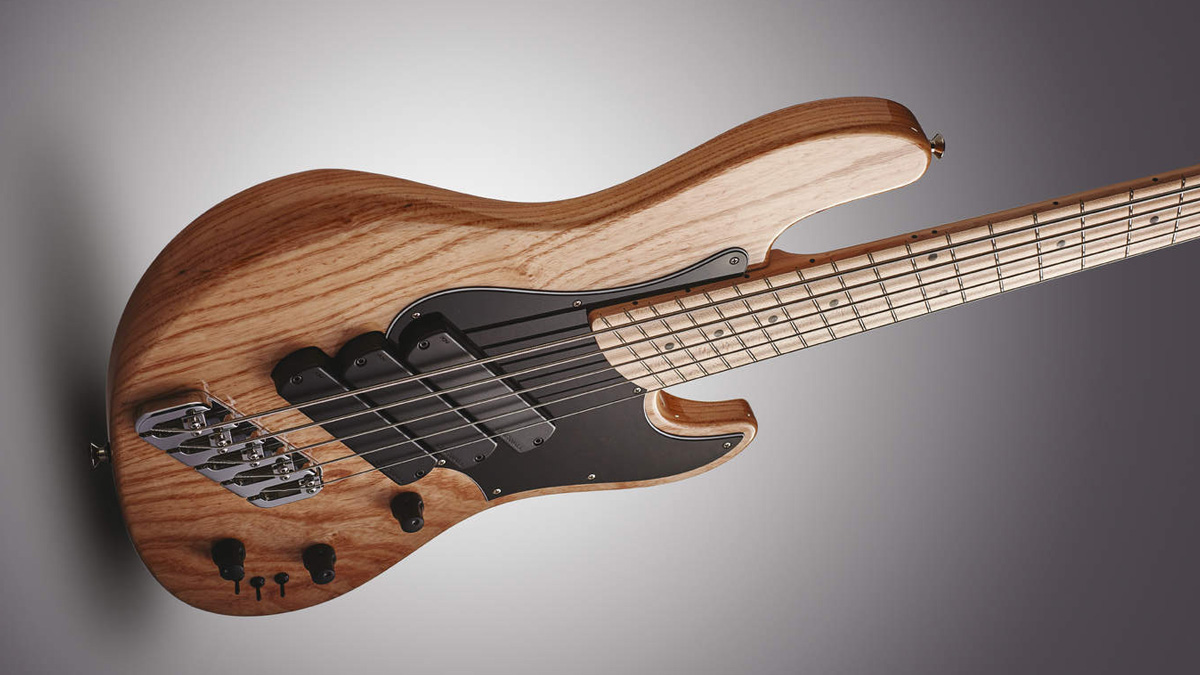MusicRadar Verdict
A very fine instrument that deserves to grab many a Jazz player’s attention.
Pros
- +
The fanned fret system really works with this design.
Cons
- -
Expensive.
MusicRadar's got your back
Some things are best left untouched - and many might say that the legendary Jazz Bass design is one such thing.
Sure, if it ain’t broke, don’t x it, but Sheldon Dingwall is a man with a curious mind and he appears to have isolated aspects of the J design that could benefit from a Dingwall ‘overhaul’, so to speak. So here we have a Super-J 5/3, with five strings and three pickups; the model is customisable with active circuitry and various other options.
For this review, we have a passive model fitted with three Dingwall-designed pickups and a trio of series/parallel switches, along with a four position pickup selector and a master tone control. Tone is certainly on the agenda, so let’s plug and play.
Build
The honey-coloured natural swamp ash body comes with hollow tone chambers to help with the weight and balance, although we know from experience that this can have an effect on the tone, so we’ll bear that in mind. The ever-familiar Jazz Bass body shape still looks so right - and looking at the body, very few changes have been made; the gloss finish (with some sumptuous timber figuring), black three-ply scratchplate, chrome bridge and black control set all look reasonably traditional.
The pickups are a major change, of course, with the fact that there are three of them and their slanted positioning. Could there be anything less Fender-esque?
Upper fret access is very good and the satin-finished neck is very accommodating, with its 22mm string spacing and slim D-shaped neck profile. There is some neck dive, but the bass balances fine on a strap. Black dot position markers have been used on the front and side of the neck while the broad fingerboard, along with the 54mm nut width, make for a very playable five-string neck. It may sound a little daunting, but it really isn’t when all the relative dimensions are taken into account.

The chrome hardware is all top quality, securely attached and functions smoothly and reassuringly well, as it should. The setup overall is very pleasing, and the fanned frets are all well seated and comfortably rounded with no sharp ends anywhere along the maple fingerboard. Master volume and tone controls are bisected by a four position pickup selector and a switch to select series or parallel operation for each pickup.
Sounds
From the start, it is evident that a lot of time and effort has been put in to get this bass exactly right. It doesn’t appear that any features or the general aesthetic have been overlooked, and all the necessary components and characteristics have been addressed. In terms of playability, the bass feels extremely slinky and responsive. Acoustically, the Super-J exhibits great sustain and resonance, and its playing comfort has obviously been a major priority, especially given the required neck dimensions.
The combination of pickups and mode switches offers an extensive choice of options and ‘colours’ to the player, with very different levels of scoop, attack, punch and presence depending on which pickups are selected. As with any system offering this level of functionality, there will be some trial and error to see what works and how the controls interact with each other.
Plugged into an amp, the bass is surprisingly full-sounding despite its chambered body and almost sounds as if it ‘breathes’ in a refined manner. String volume is very even across the neck, and the tones available vary from a very impressive Jazz impersonation (bridge and neck in parallel), through to a full-bodied, rounded Precision-like tone (neck pickup soloed).
Slappers will be mightily impressed with the percussive tones, while the bridge and middle pickups in series mode offer a bouncing version of a Stingray tone, which is always welcome. Fingerstyle tones carry plenty of weight and the tonal colouring addresses any fingerstyle tone variation you may be looking for.
For those Jazz Bass lovers who feel that the fanned-fret concept is a step too far for their beloved bass design, stop right there! The improved scale length lends itself to the five-string setup, making the low B string a wondrous thing, and the clarity and punch of the notes across the neck lends itself so well to the Jazz design. Sheldon has very much dotted the ‘I’s and crossed the ‘T’s with this particular model.
What we have here is the perfect combination of traditional and modern bass design. Overall, this is a splendid bass, although it’s a little pricey. We can see where the asking price is going, though, and we can’t fault the physical aspects of this instrument. Do try one, whether you like Jazz basses or not.
With its latest free update, Ableton has finally turned Note into the app I always wanted it to be
Technically capable, but struggle to make your tunes sound musical? 5 simple music theory hacks to make your tracks stand out
"Despite its size, it delivers impressive audio quality and premium functions as well as featuring a good selection of inspired sounds": Roland GO:Piano 88PX review










